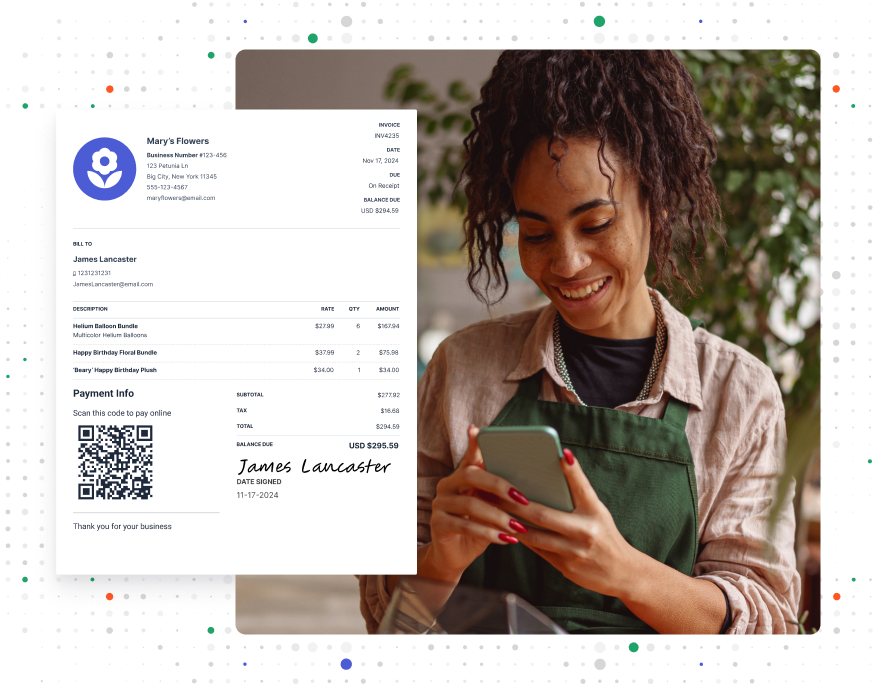The Accounting Cycle Explained: The Full 8-Step Process

Imagine a jigsaw puzzle with hundreds of pieces scattered across the table. Each piece represents a financial transaction. Your task is to fit them together to create a clear picture of your business’s financial health.
This is where the accounting cycle comes in. It’s a step-by-step process that helps you methodically organize and assemble the pieces. This way, you can make sure no financial information is missing or inaccurate. Then you know that everything is in its proper place.
In this article, we’ll explore the accounting cycle in detail. And we’ll break down the eight essential steps and give practical tips for optimizing your bookkeeping.
What Is the Accounting Cycle?
The accounting cycle is a series of steps businesses use to organize and report their financial activities. These steps are usually repeated every accounting period, such as every month or year. How often you complete the cycle is up to you.
Following each of the accounting cycle steps is often referred to as full cycle accounting. This process helps keep financial records accurate and up to date.
One key benefit of following the accounting cycle is that it offers a clear picture of your company’s financial health. This includes figures like income, expenses, assets, and liabilities. These numbers are vital for making sound business decisions.
Another major benefit is that it helps you find errors in your records. Regularly reviewing your financial data lets you correct mistakes early, before they become big problems.
RELATED ARTICLE — Invoice vs. Bill: Is an Invoice the Same as a Bill?
How Does the Accounting Cycle Work?

The accounting cycle definition includes eight steps. It starts with recording each transaction. And it ends with creating accurate financial statements for the accounting period.
You can customize the accounting cycle to fit your business model and accounting methods. For example, if you use accrual accounting rather than cash accounting, you may record transactions more often.
In the past, each step of the accounting cycle was done manually. This was a time-consuming process, and it was easy to make mistakes. With modern technology, accounting software automates the procedure for most businesses.
RELATED ARTICLE — How to Accept Payments Online (Credit, PayPal, QR Codes+)
The 8 Steps of the Accounting Cycle
Exploring each of the eight steps in detail is the key to fully understanding what an accounting cycle is.
1. Identify Transactions
The first step is to identify all the transactions that occurred during the period in question. This includes sales, purchases, receipts, and any other events that impact your finances.
Transactions typically fall into one or several of five main types of accounts:
- Assets
- Liabilities
- Equity
- Revenue
- Expenses
You’ll need to review each transaction to find out which accounts it affects and how to record it. It’s good practice to make this an ongoing step to lighten your workload at the end of each accounting period.
2. Record Transactions in the Journal
In accounting, a journal is a chronological record of all financial transactions. Once you’ve identified the transactions for the period, record them in the journal as individual entries. Each entry shows which accounts are affected and the amounts to be debited or credited.
3. Post Journal Entries to the General Ledger
After recording the transactions in the journal, you’ll move or “post” them to the general ledger. This is your master accounting document, with a separate page for each account.
4. Prepare an Unadjusted Trial Balance
The trial balance is a list of all the accounts and their credits and debits before correcting errors. It shows you whether total debits equal total credits. This helps you calculate your cash flow.
5. Analyze the Worksheet
A worksheet is a tool that helps you identify specific errors in your records. Using the trial balance, you’ll compile the credits and debits of each of your accounts in a single spreadsheet. If there are any differences, you’ll need to investigate and make adjustments in the next step.
6. Adjust Journal Entries
After analyzing the worksheet, make adjustments to correct errors.
This is also where you record any transactions that haven’t been entered yet. For example, if you have a loan, you’ll need to make an adjusting entry to record the interest since the last payment.
Adjustments ensure that your financial statements are accurate and up to date.
7. Create Financial Statements
With the finalized trial balance, you’ll prepare the final financial statements.
The three most important financial statements are the income statement, balance sheet, and cash flow statement. The income statement shows the company’s revenues, expenses, and net income or loss. The balance sheet shows the company’s assets, liabilities, and equity. Finally, the cash flow statement shows the inflows and outflows of cash.
8. Close the Books
The final step in the accounting cycle is closing the books. This means resetting temporary accounts like revenue, expenses, and dividends.
Temporary accounts track financial activity during a specific accounting period. You reset them to zero at the end of that period. This is done by moving the balances of temporary accounts to permanent accounts like retained earnings. Permanent accounts keep their balances from one period to the next.
After closing the books, the accounting cycle starts over again for the next period. This loop helps you keep accurate, up-to-date financial records about where your money is going.
RELATED ARTICLE — How to Keep Track of Business Expenses
Tips for Improving Your Accounting Cycle Process

Follow these best practices to save time and reduce errors:
Stay Organized
Staying organized means keeping accurate and up-to-date records of all your financial transactions. This is one of the simplest but most effective ways to streamline the accounting cycle.
Develop a system for categorizing and filing important financial documents. Consider going paperless by using digital tools like scanners and cloud storage. These make organization easier and more secure.
Reconcile Accounts Regularly
Make it a habit to review and reconcile your accounts regularly. This means comparing your records to your bank statements and other documents to make sure everything matches up. Aim to reconcile your accounts at least once a month to catch mistakes early.
Enforce Internal Controls
Internal controls are policies designed to prevent fraud, errors, and inconsistencies.
One example is separating duties. This way, no single person has complete control over a transaction from start to finish. Another example is requiring approvals for large or unusual expenses. Implementing these controls adds an extra layer of security to your accounting cycle. It can also help you identify errors sooner because more people are reviewing the information.
Use Accounting Software
These programs automate many of the tasks involved in the accounting cycle. They can save you countless hours of manual work and help you avoid costly errors.
Invoice Simple is a tool that makes it easier than ever to invoice customers from your phone or laptop. This way, you’ll have pristine records of all your invoices next time you put your books through the accounting cycle.
Automate Routine Tasks
In addition to using accounting software, look for other opportunities for automation. For example, setting up automatic bill payments means you’ll never miss a due date.
By automating repetitive tasks, you free up time to focus on more critical aspects of running your business.
Keep Up with Deadlines
Deadlines are crucial in the accounting world. Missing them can lead to penalties, interest charges, and damage to your reputation.
Keep a calendar of all your important financial deadlines and set reminders so you don’t get caught by surprise. Some important dates to track include recurring bill payments and tax deadlines.
RELATED ARTICLE — How to Keep Track of Invoices & Payments
Offer Your Clients Simple Ways To Pay
Use our mobile invoicing tool to create and share invoices in just a few clicks. Easily record payments, send out reminders, and keep track of your monthly sales to make your next accounting cycle a breeze.
Start Your First
Invoice Today
Create customized and professional
invoices and connect with clients
